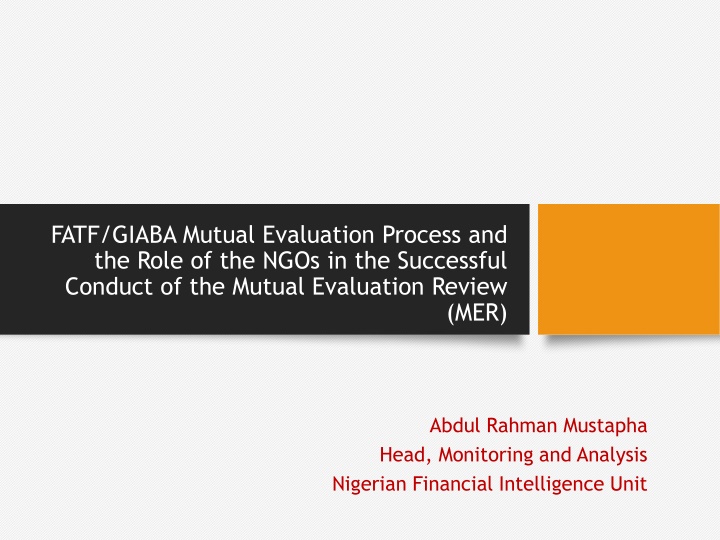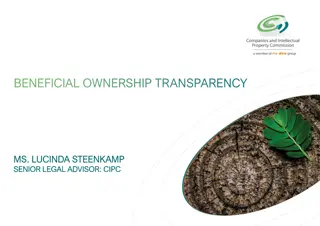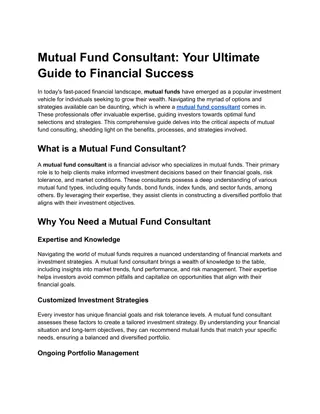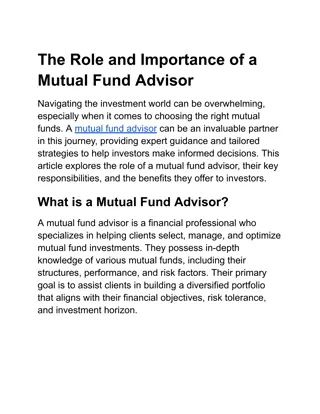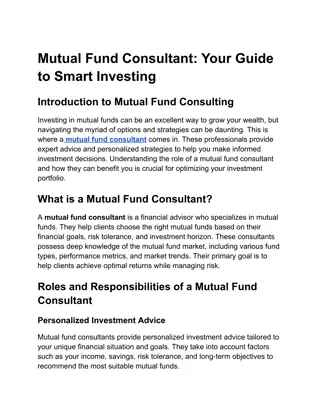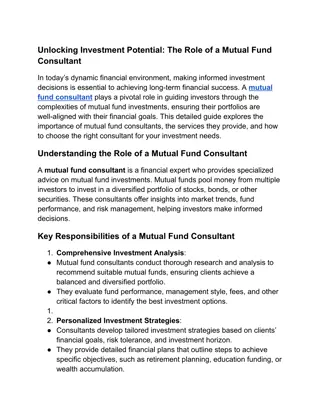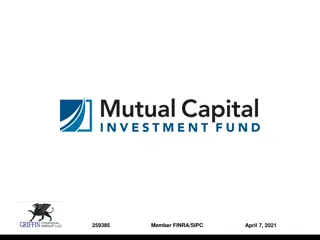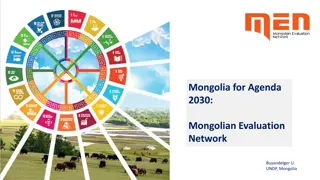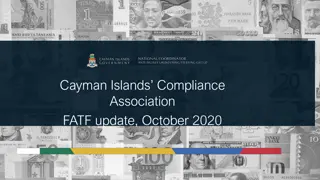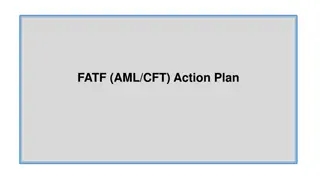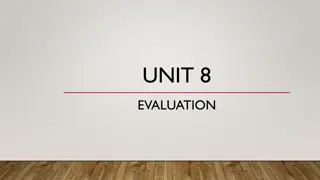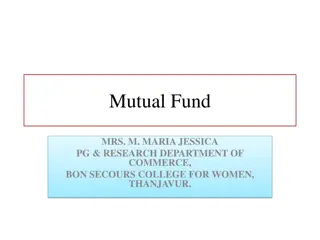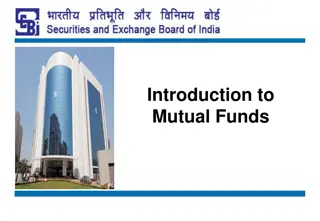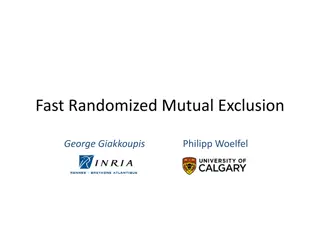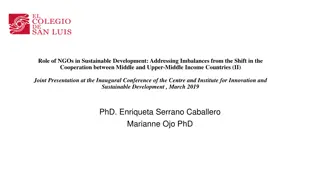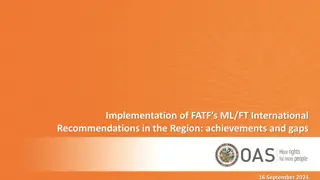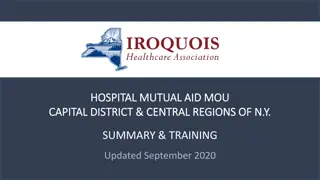FATF/GIABA Mutual Evaluation Process: Role of NGOs
Mutual Evaluation process in combating money laundering and terrorism financing. Explore the effectiveness assessments and outcomes crucial for a strong AML/CFT system. Learn about the technical compliance and the role of NGOs in successful evaluations.
Download Presentation

Please find below an Image/Link to download the presentation.
The content on the website is provided AS IS for your information and personal use only. It may not be sold, licensed, or shared on other websites without obtaining consent from the author.If you encounter any issues during the download, it is possible that the publisher has removed the file from their server.
You are allowed to download the files provided on this website for personal or commercial use, subject to the condition that they are used lawfully. All files are the property of their respective owners.
The content on the website is provided AS IS for your information and personal use only. It may not be sold, licensed, or shared on other websites without obtaining consent from the author.
E N D
Presentation Transcript
FATF/GIABA Mutual Evaluation Process and the Role of the NGOs in the Successful Conduct of the Mutual Evaluation Review (MER) Abdul Rahman Mustapha Head, Monitoring and Analysis Nigerian Financial Intelligence Unit
Current Mutual Evaluation Exercise Concept Technical Compliance Assessment addresses the specific requirements of the FATF Recommendations, principally as they relate to the relevant legal and institutional framework of the country, and the powers and procedures of the competent authorities. These represent the fundamental building blocks of an AML/CFT system.
Current Mutual Evaluation Exercise Concept Technical Compliance and Effectiveness assessments together shows the extent to which the country is compliant with the FATF Standards and how strong the country is in maintaining a effective & strong AML/CFT system.
Component of MER Assessment 5 Effectiveness ratings Technical Compliance There are no short comings High level of effectiveness The immediate outcome is achieved to a very large extent. Minor improvement is needed Compliant (C) Largely Compliant(LC) There are only minor short comings Substantial Level of effectiveness The immediate outcome is achieved to a large extent. Moderate improvements needed. Partially Compliant (PC) There are moderate short comings Moderate level of effectiveness The immediate outcome is achieved to some extent. Major improvements needed. Non Compliant (NC) There are major short comings Not Applicable (NA) A requirement does not apply, due to structural,l legal or institutional features of a country. Low level of effectiveness The immediate outcome is not achieved or achieved to a negligible extent. Fundamental improvement 2/19/2025 needed.
The FATF Eleven Immediate Outcomes 2/19/2025 6
Current Mutual Evaluation Exercise Concept Effectiveness It seeks to assess the adequacy of the implementation of the FATF Recommendations, and identifies the extent to which a country achieves a defined set of outcomes that are central to a robust AML/CFT system. The focus of the effectiveness assessment is therefore on the extent to which the legal and institutional framework is producing the expected results.
Methodology High level Outcomes 1. Policy, Coordination and Cooperation to mitigate the ML and FT risks 2. Proceeds of Crime and Funds in support of Terrorism are prevented from entering the financial and other sectors (DNFBP) are detected and reported by these sectors. 3. ML threats detected, disrupted and criminals found sanctioned and deprived of proceeds. TF threats detected and disrupted, Terrorist deprived of resources and financiers of terrorism are sanctioned thereby contributing to the prevention of terrorist acts
Methodology Immediate Outcomes High level outcome 1- Policy, Coordination and Cooperation to mitigate the ML and FT risks Understanding ML/TF Risks, appropriate actions and domestic cooperation to combat ML/FT/Proliferation. International Cooperation to delivers appropriate information financial intelligence, and evidence, and facilitates action against criminals and their assets
Mutual Evaluations requirements role of the DNFBP sector High Level Outcome 2 Proceeds of Crime and Funds in support of Terrorism are prevented from entering the financial and other sectors (DNFBP) are detected and reported by these sectors. Immediate Outcome 4. -Financial Institution and DNFBPs adequately apply AML/CFT preventive measures commensurate with their risks and report Suspicious Transactions
I.O - 4 DNFBPs Preventive Measures applicable to DNFBPs Risk assessment- Products/Service/Customers National Risk Assessment Results CDD Measures KYC, EDD, SDD Monitoring Reporting functions Report to the NFIU? Mechanism for reporting Timely reporting, etc
I.O 10 High Level Outcome- 3 IO-10: Terrorist, Terrorist organizations and Terrorist financiers are prevented from raising, moving and using funds, and from abusing the NPO sector. This means; DNFBPS should take the following reasonable steps to; Understand and safeguard their organization from being used to raise funds by terrorist. Understand and safeguard their organization from being used to move funds. Understand and safeguard their organization from being used in utilizing their terrorist funds?
Concept of Risk Risk = Vulnerability x Threat x Impact Vulnerability=An error or a weakness in the design, implementation, or operation of a system. Threat=An adversary that is motivated to exploit a system vulnerability and is capable of doing so system vulnerability and is capable of doing so Impact= the likelihood that a vulnerability will be exploited or that a threat may become harmful .
Conclusion Know your Industry What do you (do) sell? What products (service) do you provide? Who is your customer or client? How much do you know him? Where do you operate? What is your risk exposure? What are your mitigants?
THANK YOU QUESTIONS ?
